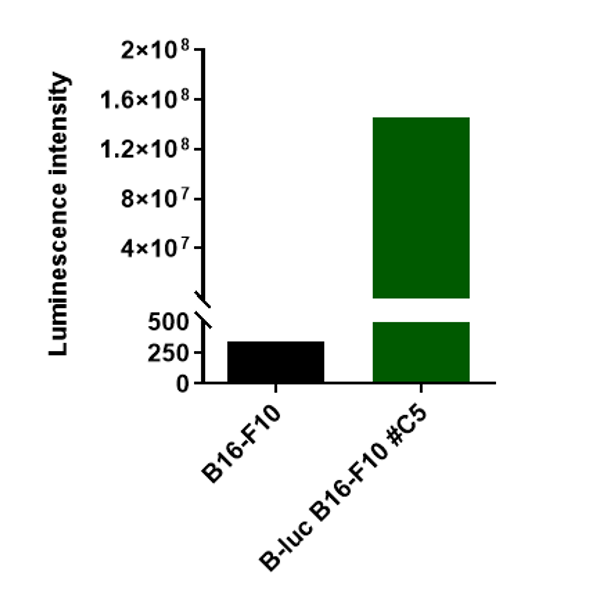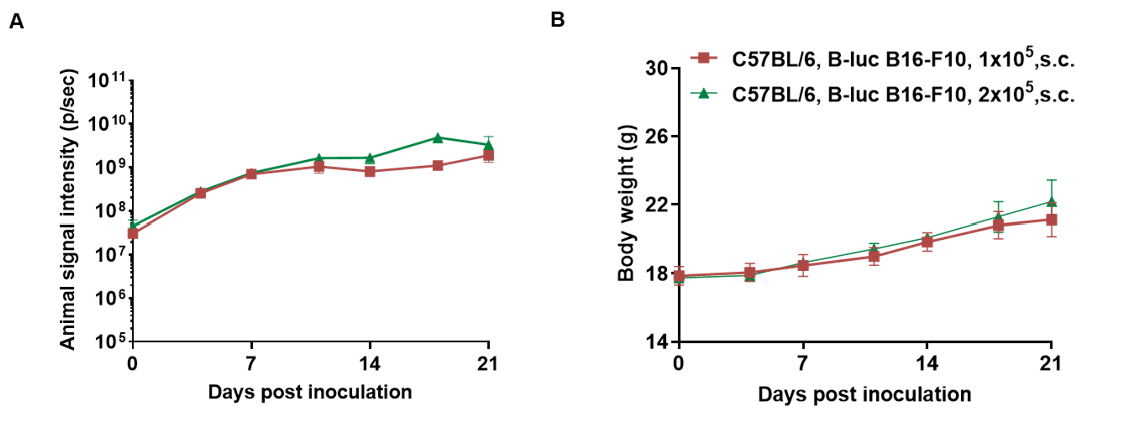Basic Information
Description
This B-luc B16-F10 cell line expresses firefly luciferase as a marker of B16-F10 cells. Luminescence can be observed B-luc B16-F10 cells.
-
Targeting Strategy

-
Gene targeting strategy for B-luc B16-F10. The luciferase cDNA sequence with CAG promoter was inserted in the ROSA26 intron1 of wild-type B16-F10.
-
In vitro luciferase activity of B-luc B16-F10 cells

-

Luminescence signal intensity of B-luc B16-F10 cells. Luminescence intensity was measured using the Bright-GloTM luciferase Assay (Promega, Cat E2610). B-luc B16-F10 cells have a strong luminescence signal. The C5 clone of B-luc B16-F10 cells can be used in vivo experiments.
-
Tumor Growth Curve & Body weight changes

-

Subcutaneous homograft tumor growth of B-luc B16-F10 cells. B-luc B16-F10 cells and wild-type B16-F10 cells were subcutaneously implanted into C57BL/6 mice (female, 7-week-old, n=5). Tumor volume and body weight were measured twice a week. (A) Average tumor volume. (B) Body weight. Volume was expressed in mm3 using the formula: V=0.5 X long diameter X short diameter2. As shown in panel A, B-luc B16-F10 cells were able to establish tumors in vivo and can be used for efficacy studies. Values are expressed as mean ± SEM.
-
Quantitative Imaging Data & Body Weight Changes

-

Tumor growth and in vivo imaging of B-luc B16-F10 cells. B-luc B16-F10 cells (1×105 and 2×105) were subcutaneously implanted into the wild-type C57BL/6 mice. Signal intensity and body weight were measured twice a week. (A) Imaging was performed twice a week. (B) Body weight (Mean ± SEM). B-luc B16-F10 cells can be used for in vivo efficacy evaluation.


